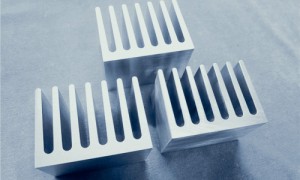What is prototype machining?
Views: 783 Update date: Jul 17,2024
Prototype machining, a critical stage in the product development process, refers to the creation of an initial, functional representation of a final product or part. This stage is vital for testing, evaluation, and refinement before committing to mass production. Prototypes allow manufacturers, designers, and engineers to visualize, touch, and test a physical model of their concept, ensuring its viability and performance before investing in the production of thousands or even millions of units.
2. Functional Prototypes: These prototypes are designed to test the actual functionality and performance of a product. They often incorporate all the necessary components and mechanisms to mimic the final product's behavior.
3. Presentation Prototypes: Used for marketing and sales purposes, presentation prototypes are designed to showcase the product's appearance and appeal to potential investors or customers.
2. Lower Costs: By testing and refining designs at the prototype stage, manufacturers can avoid costly errors in mass production.
3. Customer Validation: Prototypes allow for early customer feedback, ensuring that the final product meets market demands and expectations.
4. Risk Reduction: Testing prototypes under real-world conditions helps identify potential issues before they become problems in production.
In conclusion, prototype machining plays a crucial role in the product development process. It allows for the creation of functional representations of designs, enabling faster iterations, lower costs, customer validation, and risk reduction. As manufacturing technology continues to evolve, prototype machining will remain an essential tool for bringing innovative products to market.
Prev: How to order CNC parts?
Next: How are small aluminum parts made?
Types of Prototypes
1. Concept Prototypes: These are early, often crude, models used to communicate the basic design and functionality of a product. They are not necessarily intended to be functional but serve as a visual representation of the idea.2. Functional Prototypes: These prototypes are designed to test the actual functionality and performance of a product. They often incorporate all the necessary components and mechanisms to mimic the final product's behavior.
3. Presentation Prototypes: Used for marketing and sales purposes, presentation prototypes are designed to showcase the product's appearance and appeal to potential investors or customers.
The Process of Prototype Machining
Prototype machining typically begins with a design, either in 2D or 3D CAD software. This design is then converted into a machinable file format, such as STL or DXF, which can be read by CNC (Computer Numerical Control) machines.
CNC machines, such as mills, lathes, routers, and laser cutters, are used to precisely remove material from a block of raw material, such as metal, plastic, or wood, to create the desired shape. The process is guided by the CAD file, ensuring accuracy and repeatability.
After the initial machining is complete, prototypes may require further finishing operations, such as polishing, painting, or assembly. These additional steps help bring the prototype closer to the final product's appearance and feel.

Advantages of Prototype Machining
1. Faster Development: Prototypes can be created quickly, allowing for faster iterations and improvements during the design phase.2. Lower Costs: By testing and refining designs at the prototype stage, manufacturers can avoid costly errors in mass production.
3. Customer Validation: Prototypes allow for early customer feedback, ensuring that the final product meets market demands and expectations.
4. Risk Reduction: Testing prototypes under real-world conditions helps identify potential issues before they become problems in production.
In conclusion, prototype machining plays a crucial role in the product development process. It allows for the creation of functional representations of designs, enabling faster iterations, lower costs, customer validation, and risk reduction. As manufacturing technology continues to evolve, prototype machining will remain an essential tool for bringing innovative products to market.

